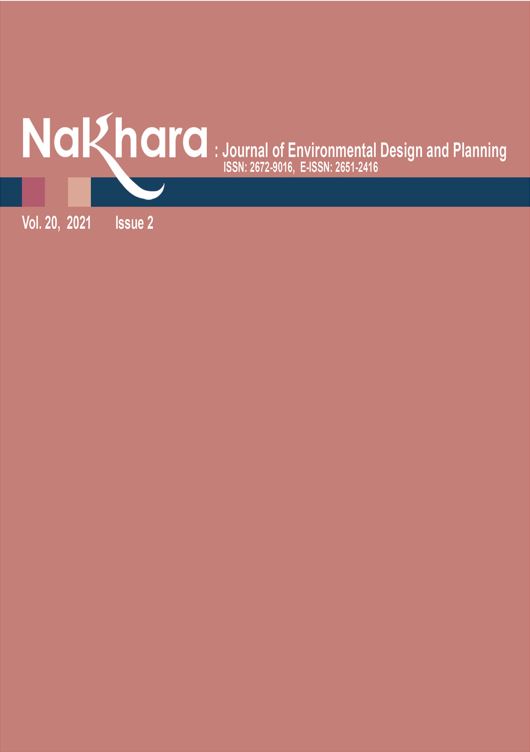The Indonesian Government’s Role in Setting Renewable Energy Targets to Reduce GHG Emissions from the Electrical Energy Sector
Main Article Content
Abstract
Greenhouse gas (GHG) emissions are being blamed for global warming, and the Indonesian government is concerned about it. The government has proven its concern for GHG reduction by participating in the Intergovernmental Panel on Climate Change and signing the Paris Agreement. In order to meet the Nationally Determined Contribution (NDC) target in the National Energy General Plan (RUEN) 2015-2050, the government has issued regulations and plans designed to achieve the objective of producing up to 31% of the nation’s electrical energy from renewable sources by 2050. The RUEN transcription in the General Plan of Regional Energy (RUED) will be implemented in the RUED of West Papua (RUED-P), which is expected to reach the target of 33% of the energy production from renewable sources by . The main issues with implementing NDC targets in RUEN and RUED-P are related to time and costs. This paper investigates the effectiveness of current and proposed government regulations in achieving Indonesia's NDC target by 2030 through the implementation of RUEN and RUED-P in the province of West Papua. The simulation results show that the target of achieving the NDC target of a 29% reduction in GHGs through RUEN can be surpassed. The potential exists to achieve a reduction of 54,363 tons CO2e (or 30.01%), compared to the ‘business as usual’ (BAU) scenario of 77.619 tons CO2e. However, the NDC target of a 41% reduction by 2050 will not be met as implemention of the West Papua regional scenario via the RUED-P will result in a GHG reduction of only 55,393 tons of CO2e, or 28.63% under this scenario. By imposing a 2030 target for energy production from renewable sources amounting to 33% of total generating capacity under RUED-P, the NDC target can actually be exceeded. Under every scenario, the state-owned electric company (PLN) operates at a deficit under current customer pricing. For this reason, the government needs to increase the basic electricity tariff to IDR 2,500 per kWh in order to support PLN operations and not burden the state's budget by subsidizing PLN’s losses.
Article Details

This work is licensed under a Creative Commons Attribution-NonCommercial-NoDerivatives 4.0 International License.
References
Anonymous. (2010). Electricity statistics. Ministry of Energy and Mineral Resources.
Biro Pusat Statistik. (2010). West papua in numbers. Central Bureau of Statistics.
Choi, S., Munkhsaikhan, Z., & Oh, J. (2022). The impact of official development assistance on carbon emissions in developing countries: Implications for Mongolia. Nakhara: Journal of Environmental Design and Planning, 21(3), Article 221. https://doi.org/10.54028/NJ202221221
Eggleston, H. S., Miwa, K., Srivastava, N., & Tanabe, K. (2008). 2006 IPCC Guidelines for national greenhouse gas inventories –A primer. National Greenhouse Gas Inventories Programme.
Hendri, M. K., Prabawardhani, S., Syamsudin, K., & Pradafitri, W. S. (2021). Scenario for west papua contribution for NDC from forestry sector. IOP Conference Series: Earth and Environmental Science, 716(1), Article 012017. https://doi.org/10.1088/1755-1315/716/1/012017
Law No. 45, Pub. L. No. 45 / 1999, 22 (1999). https://peraturan.bpk.go.id/Home/Download/33882/UU Nomor 45 Tahun 1999.pdf
Malbon, E., & Parkhurst, J. (2022). System dynamics modelling and the use of evidence to inform policymaking. Policy Studies, 44(4), 454–472. https://doi.org/10.1080/01442872.2022.2080814
Oxa, A., & Erma, S. (2012). Application of dynamic system models to analyze electricity demand and availability in the industrial sector (case study: East Java). Jurnal Teknik ITS, 1, 339–344.
Perusahaan Listrik Negara. (2021). Statistics of PLN 2020. State Electricity Company.
Prabawardani, S., Hendri, Karuniasa, M., Syamsudin, K., Maharani, C., & Munichputranto, F. (2021). Towards a low carbon solid waste management in West Papua. IOP Conference Series: Earth and Environmental Science, 716(1), Article 012016. https://doi.org/10.1088/1755-1315/716/1/012016
Presidential Instruction, Pub. L. No. 9 / 2017, Percepatan Pembangunan Kesejahteraan di Provinsi Papua dan Provinsi Papua Barat 9 [Acceleration of Welfare Development in Papua Province and West Papua Province] (2017a). https://peraturan.bpk.go.id/Home/Download/68322/Inpres Nomor 9 Tahun 2017.pdf
Presidential Instruction, Pub. L. No. 22 / 2017, Rencana Umum Energi Nasional 227 [National Energy General Plan] (2017b). https://www.esdm.go.id/assets/media/content/content-rencana-umum-energi-nasional-ruen.pdf
Presidential Instruction, Pub. L. No. 9 / 2020, Percepatan Pembangunan Kesejahteraan di Provinsi Papua dan Provinsi Papua Barat 9 [Acceleration of Welfare Development in Papua Province and West Papua Province] (2020). https://peraturan.bpk.go.id/Home/Download/68322/Inpres Nomor 9 Tahun 2017.pdf
Rizaldi, B., Retno, G. D., Ucok, W. R. S., Muhammad, A., & Elza, S. (2012). Guidelines for implementing a national greenhouse gas inventory (Vol. 1). Ministry of Environment. https://www.kemenperin.go.id/download/18859
Seutche, R. V., Sawadogo, M., & Ngassam, F. (2021). Valuation of CO2 emissions reduction from renewable energy and energy efficiency projects in Africa: A case study of Burkina Faso. International Journal of Renewable Energy Development, 10(4), 713–729. https://doi.org/10.14710/ijred.2021.34566
Tantiwatthanaphanich, T., & Zou, X. (2016). Empowering the local community via biomass utilization: A case study in Thailand. International Review for Spatial Planning and Sustainable Development, 4(2), 30–45. https://doi.org/10.14246/irspsd.4.2_30
Tax Harmonization, Pub. L. No. No. 7/2021, No. 7/2021 No. 7/2021 5 (2021). https://peraturan.bpk.go.id/Home/Details/185162/uu-no-7-tahun-2021
Tjolli, I., Karuniasa, M., Rehiara, A. B., Jance, S., & Lestari, I. (2021). Development of the sustainable human development index model in West Papua. IOP Conference Series: Earth and Environmental Science, 716(1), Article 1. https://doi.org/10.1088/1755-1315/716/1/012106
Wurarah, R. N., Karuniasa, M., Wehantouw, F., Tuharea, A., & Muhsin, M. (2021). Towards an eco-industrial development in West Papua economy. IOP Conference Series: Earth and Environmental Science, 716(1), Article 1. https://doi.org/10.1088/1755-1315/716/1/012104
Yang, F., Li, Y., & Xu, J. (2016). Review on urban GHG inventory in China. International Review for Spatial Planning and Sustainable Development, 4(2), 46–59. https://doi.org/10.14246/irspsd.4.2_46

